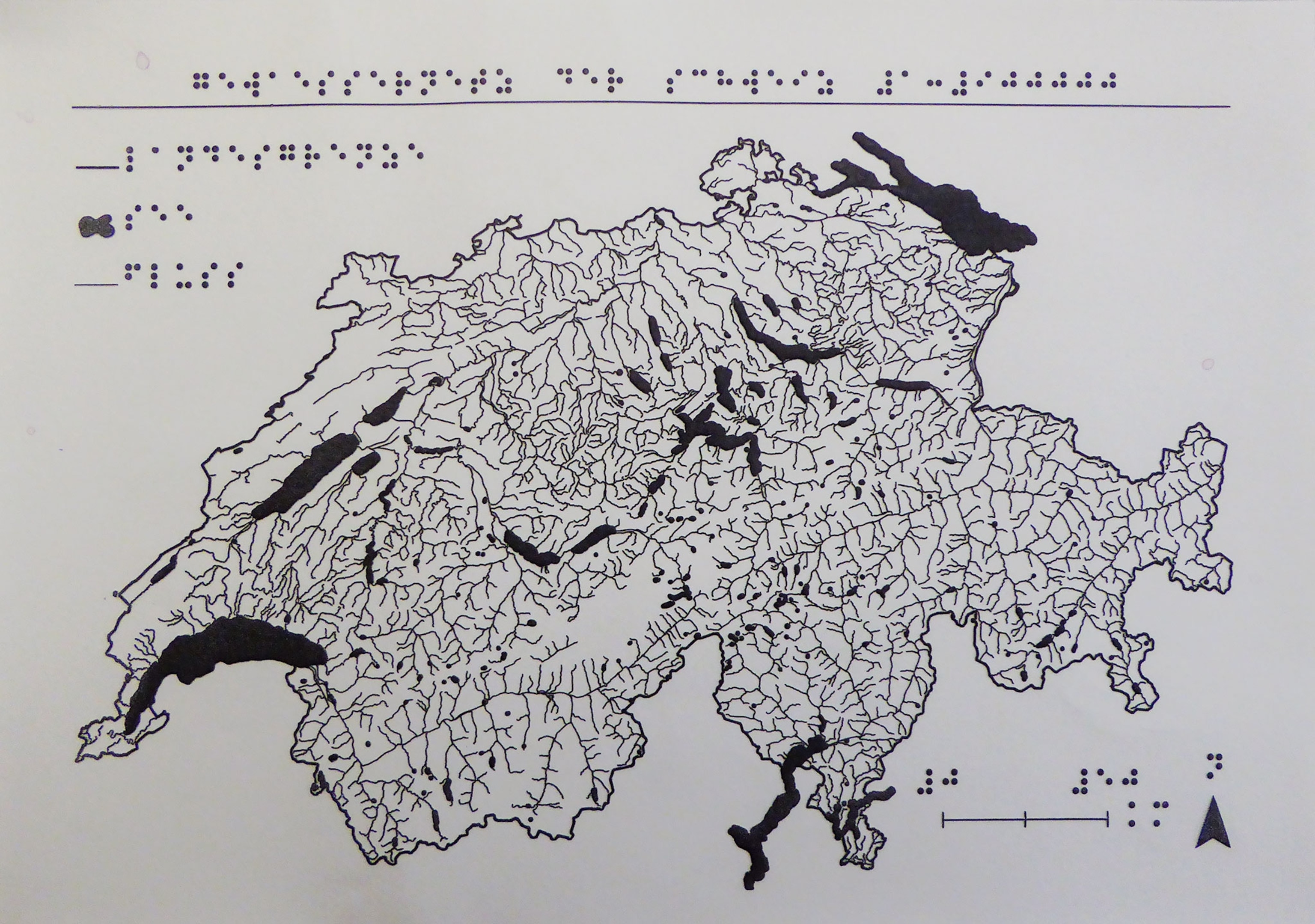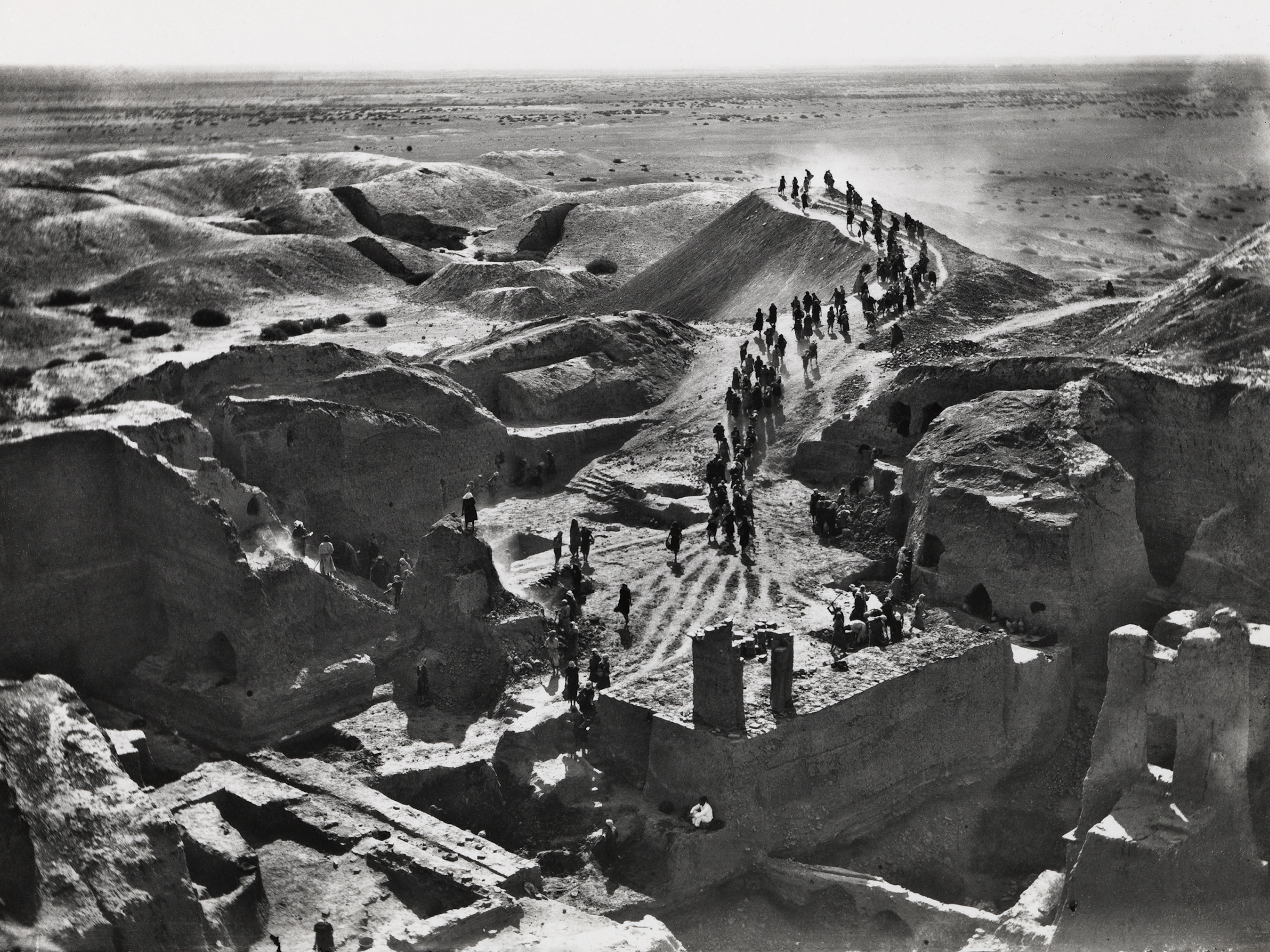
A Tactile Atlas Helps the Blind 'See' Maps
A new atlas of Switzerland conquers the challenges of making maps designed to be read with the fingertips.
Some maps are meant to be felt, not seen.
The photograph above shows a page from an atlas commissioned by a Swiss psychologist for a friend who loves geography and maps but is unable to use traditional atlases because he is completely blind. The new atlas is printed with special ink that expands when heated to create tiny bumps and ridges on the page.
Making a tactile map like this isn’t easy, says Anna Vetter, a cartographer who works in Zürich for the mapping software company Esri and led the team that created the new atlas. “It was quite challenging for me because you really have to think in a different way,” Vetter says.
For example, Vetter used hatched lines to indicate railroad tracks, as you can see in the image below. At first she put the hatch marks closer together, but the blind man they were made for couldn’t distinguish the railways from the solid lines indicating rivers and boundaries. “I thought it looked pretty good, but it was totally useless for feeling,” Vetter says.

She learned other lessons along the way, too. The triangles indicating mountains had to be bigger than she would have thought to be distinguishable from the squares that indicate towns. And the labels were especially tricky. Braille letters have to be a certain size to be readable, but there’s only so much space on a page. The cartographers developed a two-letter abbreviation system to keep down the clutter, but that required creating an accompanying dictionary to decipher them.
Maps designed to be read with the fingertips have to be less dense with information, says Amy Lobben, a geographer at the University of Oregon in Eugene who studies how people use tactile maps. “The best analogy for a sighted person is to imagine looking through a soda straw and moving it around the map and trying to figure out the layout of that map,” Lobben says. Not only are you limited to seeing a tiny portion of the map at a time but you also have to remember all the tiny soda-straw views and stitch them together in your mind to get the big picture, she says. “You have to use so much more memory than if you were just looking at it with your eyes.”
To keep the density of information low for the new Swiss atlas, Vetter created two separate sets of maps. One includes settlements, administrative units, mountains, and bodies of water; the other charts the country’s rail network.
Reading a tactile map is a slow process, but Vetter says she was impressed to see the blind man feel his way around a map of Zürich, his home city. “It was really interesting to watch how he did that and how he immediately recognized it,” she says. It’s definitely an acquired skill, though. When Vetter closed her eyes and felt the Zürich map herself she could only recognize individual features—a railway or a river, for instance—but not the place as a whole. The big picture didn’t click into place in her mind.

Lobben says tactile maps like this are still fairly rare. That’s because the demand is low relative to the demand for conventional maps and also because maps like this are difficult and expensive to make. Many sight-impaired people don’t have access to them, she says. “There’s such a limited supply.”
The psychologist who commissioned the maps will be able to give the final printed copy of the atlas to his friend this month, and Vetter says the psychologist plans to have additional copies printed for Switzerland’s national library for sight-impaired people and for schools for the sight-impaired.



